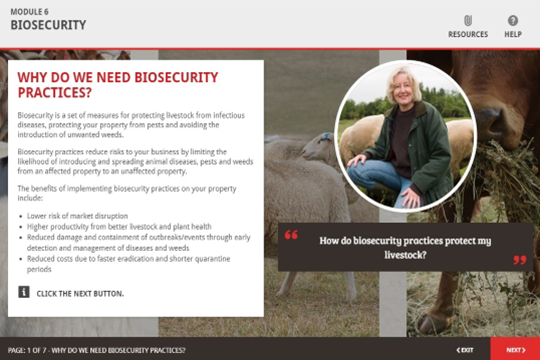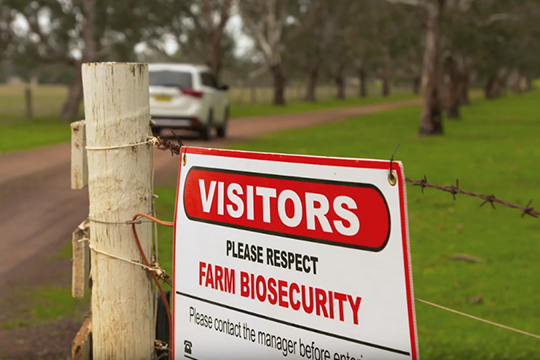
LPA Learning
Consolidate your knowledge on biosecurity completing this LPA Learning module.
Biosecurity relates to preventive measures designed to reduce the risk of transmission of infectious diseases, invasive pests or weeds.
Good biosecurity practices prevent the spread of infectious disease and invasive pests or weeds between farms as well as protecting Australia from diseases and weeds that occur overseas. Biosecurity procedures address the containment of disease outbreaks when they occur.
Updates to the LPA website now allow farm biosecurity plans to be completed entirely online rather than on a printed template.
Access ISC’s detailed step-by-step guide to creating and uploading documents to your LPA account to learn how to complete your digital farm biosecurity plan.
Guide to creating or uploading documents to your LPA account
If you have a farm biosecurity plan for other purposes and it covers the elements listed within this template, you do not need to complete an additional biosecurity plan for LPA.
As a livestock producer, you must implement on-farm biosecurity systems to minimise the risk of infectious diseases being introduced to livestock production properties and the subsequent spread of any such diseases, and this includes:
Ensuring your livestock are, and remain, free from serious infectious diseases allows you to maximise farm productivity and minimise animal discomfort, stock losses and medical costs.
Biosecurity practices will be reviewed during an LPA audit. Producers must have a documented biosecurity plan available if selected for an LPA audit. Biosecurity practices will also be reviewed as part of the LPA accreditation assessment process.
With the recent outbreaks of Foot and Mouth Disease (FMD) and Lumpy Skin Disease (LSD) in Indonesia, it is critical for livestock producers to understand their responsibilities, be vigilant and on the lookout.

To meet the requirements of LPA, each Property Identification Code (PIC) must have a formal, documented Farm Biosecurity Plan that addresses each of the following:
Biosecurity was included in the LPA program on 1 October 2017. Every LPA-accredited producer must ensure biosecurity requirements are fulfilled both on farm and during the transport of livestock between properties and feedlots, including slaughter and live export.
Integrating biosecurity requirements into LPA strengthens the promise made to our customers, protects our industry and environment, and streamlines the process of record-keeping and reporting for livestock producers.

Consolidate your knowledge on biosecurity completing this LPA Learning module.

Watch this video to understand how to meet the biosecurity requirements of LPA on-farm and during the transport of livestock
Producers who have developed a Farm Biosecurity Plan as part of their approach to Johne’s disease management do not need to complete another plan under the LPA program requirements.
States and territories have different biosecurity requirements. For record keeping required by LPA, producers need to develop a farm biosecurity plan.
Biosecurity risks during and after a natural disaster, can include the spread of pests and diseases. LPA accredited producers should review and update their biosecurity plans to include risks associated with flooding & fire. Records should be kept on all feed introduced to the property as well as which livestock received it.
If livestock have spread to neighbouring properties, producers should consider any risks around pests, disease and biosecurity for their own property before they are brought home. A number of recommended practices are included on the LPA farm biosecurity plan template that should be considered.
Read more about biosecurity as an LPA requirement.
As part of LPA, biosecurity is a key requirement which assists producers in standing by what they sell. ISC understands that some challenges with biosecurity, such as feral animal invasion, can be out of your control. Being aware of this risk and noting it in your biosecurity plan, as well as how you will manage it, is important should you be audited as an LPA-accredited producer.
Read more about biosecurity as an LPA requirement.